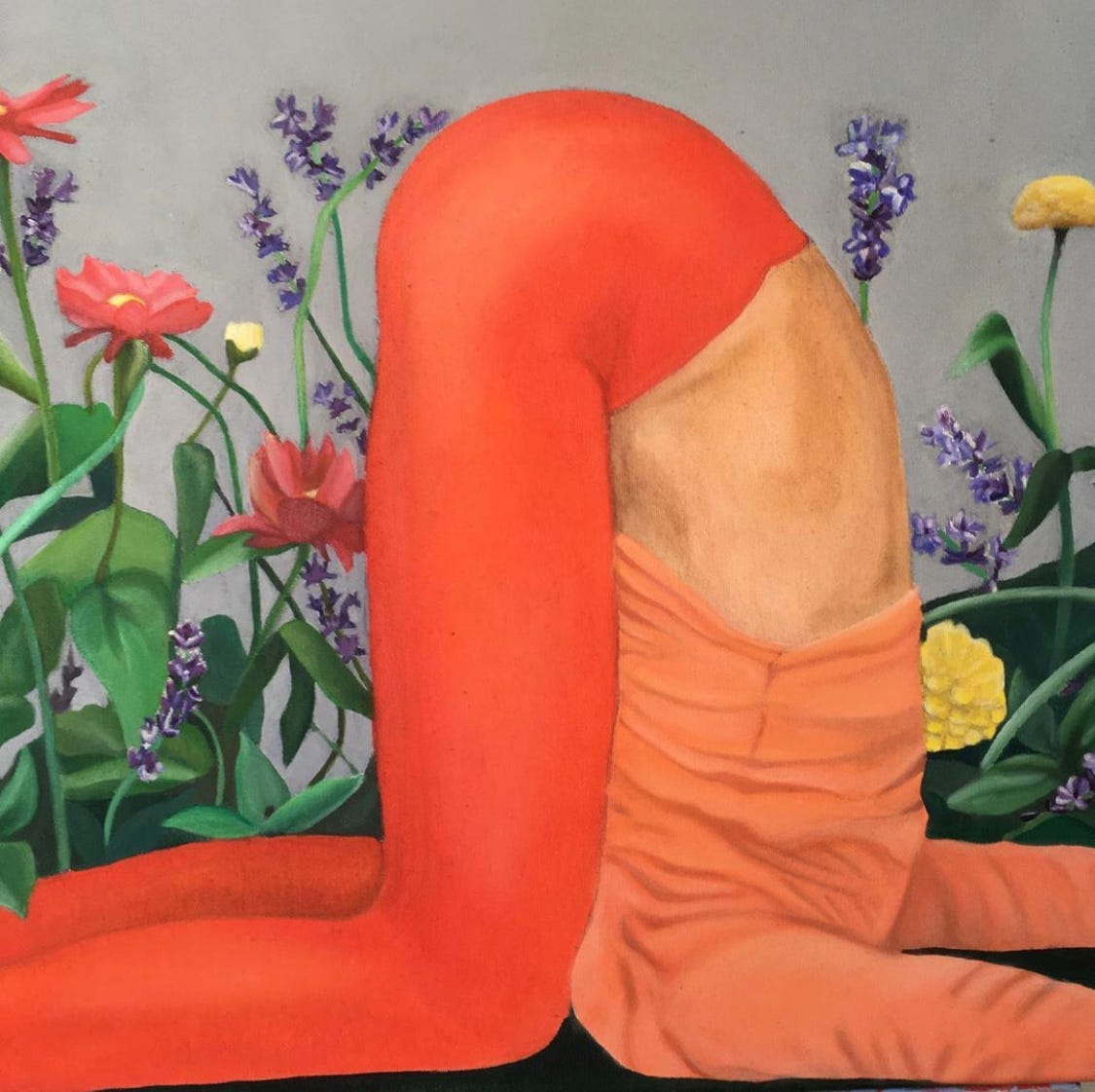This is an evolved version of a reflection from a few years ago. I like to think of my writing as a constantly evolving ecosystem, one that needs to move in order to thrive.
A ritual/call to presence at the end of the essay invites you to embody what is discussed in these words. Enjoy 🌻
My relationship with silence has been tumultuous. I am a talker, everyone who knows me knows this. Until a few years ago, Silence was to me a space that needed to be filled, not enjoyed. But in a period of questioning what I knew to be true, I began to investigate why my thoughts on the topic had evolved this way.
From the Greek myth of Echo, the woman cursed by Hera to only be able to repeat the last words she heard, to the harrowing novel by Chris Abani where child soldiers are used as mine-clearers and have gone under a surgeon’s knife to have their vocal cords cut out so they don’t scream when mines go off, silence is often portrayed as a symbol of our freedom being stripped from us.
This is definitely true if we look at Silence from an anthropocentric point of view. Evolutionary, and extractive, discourse often centres a narrative that that which made humans “superior” to animals is infact our ability to communicate through speech. Somehow, voice acts as a barrier of separation with other species, one of power. In this perspective then, erasing our physical voice is erasing our humanity.
During my research, many of the stories I came across perpetuated the narrative of silence as a weapon of the patriarchy, but one myth that I came across had elements of this narrative but had ground for rewilding.
According to the myth, Tereus was a Thracian king who was married to Procne, the daughter of the Athenian king Pandion. Tereus was sent by Pandion to escort Procne to Thrace, but during the journey, Tereus became enamoured with Procne's sister, Philomela. Tereus then betrayed his wife by imprisoning Philomela in a remote location and cutting out her tongue to prevent her from revealing his crime.
Unable to use her voice, Philomena began to weave a tapestry to tell the story of her captivity and sent it to her sister.
This made me think, what if, then, the silence was the birthplace of another language, one of creation? Like Philomena found her voice through other means, embroidery has been used as a means of communication and storytelling by women in many different cultures throughout history. In parts of Eastern Europe, traditional embroidery designs often incorporate symbols and motifs that represent cultural and regional identity, as well as spiritual beliefs. In Romania, traditional embroidery designs often feature geometric shapes and floral motifs, which can represent the natural world and its cycles, almost acting as a bridge between femininity and nature.
In Russia, traditional embroidery designs often incorporate religious symbols and imagery, as well as depictions of nature and the rural landscape. These designs can reflect aspects of Russian Orthodox spirituality and traditional folk beliefs. Embroidery thus almost forms a secret language which resists through time. In Mexico and other parts of Latin America, embroidery has been used to tell stories and convey cultural heritage through intricate designs and colourful threads. This continues the world over, in Eastern Africa, for example, identity and status are displayed in the use of specific colours, patterns, and designs of clothing.
Western-patriarchal society focuses overwhelmingly on speech, voice, and discourse as tools for liberation, and surely they are, especially when silence is enforced. What we fail to see however, is the space between. Speech is permeated by silence, and it would not be intelligible without it. To echo Monica Brito Vieira’s research “Pauses between words, their duration and location, are as meaningful and consequential as the words themselves. But silence is much more than the space between words—it is a political category in its own right.”
I want to retell the story of a silence that is not rooted in fear, nor one that comes from being told too many times that you didn’t know better or that your opinions did not matter. The silence I want to centre in my narrative is contemplative, never enforced, one where you learn about things that you don’t know about, the kind that makes you think before you speak, that teaches you to respond and not react. It is a silence that is directed towards the interior, one that shows you that you will never speak your way into someone’s heart.
This silence is intrinsically political because it is a place where progress and change happen.
I would like you to think of this Silence as poised, graceful, patient, introspective and at the same time assertive, irremovable and powerful. It comes from the interior, from a deep understanding and acceptance of intricacies: it is the birthplace of creation.
Lately, I have felt overwhelmed and had a strong desire for silence. I wandered through the city in search of a place where I could find it, and it was very difficult.
Sirens, road works, cars, and motorbikes, all form part of an overwhelming soundtrack of a capitalist society, one that is hyperfocused on production and growth. It is in this chaos, that when silence falls suddenly, it makes itself heard, as a song of liberation.
Access to Silence is a political issue, and this is highlighted by the inequality statistics around noise pollution which show that poorer communities tend to live in noisier places, which can lead to health issues like lack of sleep or high blood pressure.
And even more, Western-centric patriarchy doesn’t teach us silence, it teaches us that she with the loudest voice is the strongest, but I invite you to retell this story too. If we think about it, silent rebellions happen within human bodies all the time and create change, the healing of a wound, and the digestion of food, are all examples of change happening without noise.
Our humanity is formed inside the body of our mothers, we spend the first 9 months of our existence in silence, with minimum disturbance. The process of a seed’s radicle pushing its delicate roots into the soil happens without anyone hearing it. Creation is often a silent affair, one that we need to reclaim.
Mucho Amor, V
Below, the ritual invites you to embody what is discussed in these words. It has a special recipe I learned from a local herbalist this week and an embodied (ecological) practice I added to it. Enjoy 🌻
Call to Presence:
This recipe was taught to me by Irene Apolo, who bridges Ayurvedic practices through the use of local plants. She learned from wise women in Andalusia how to work with plants by familiarising with them through observation and building a silent language with them.
Keep reading with a 7-day free trial
Subscribe to Waves to keep reading this post and get 7 days of free access to the full post archives.






